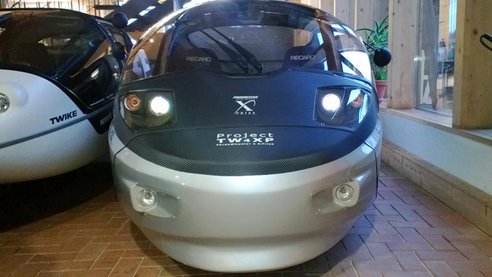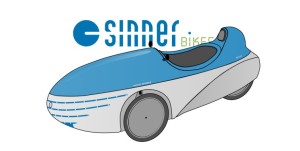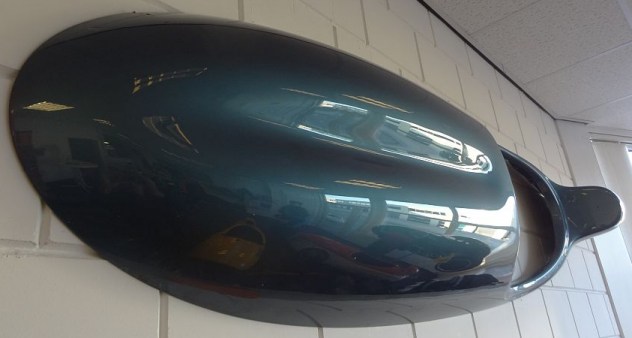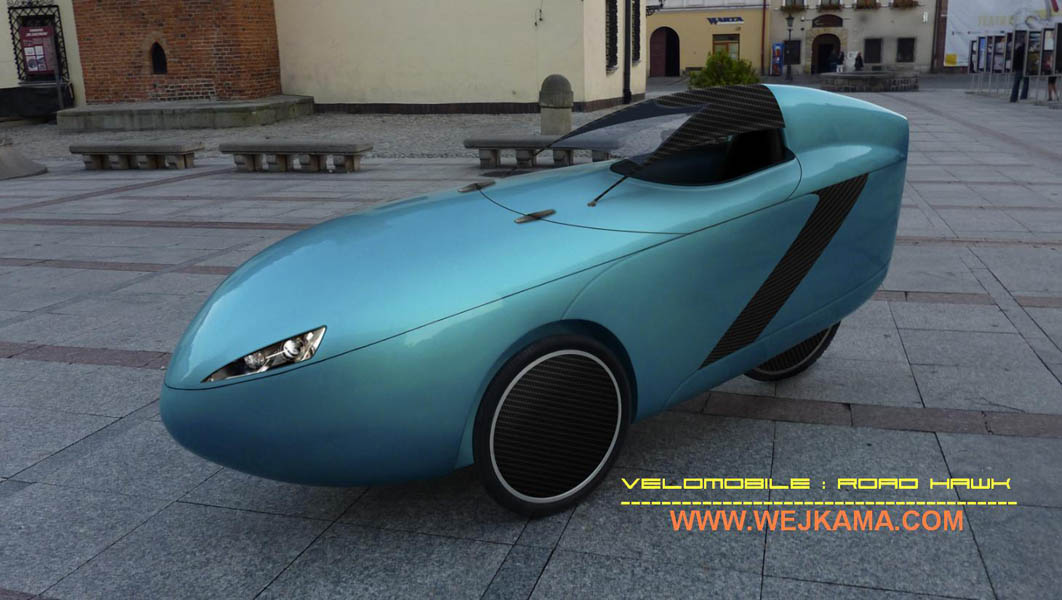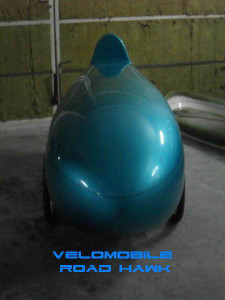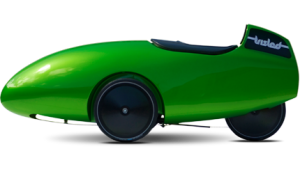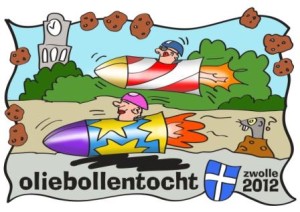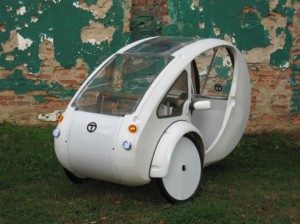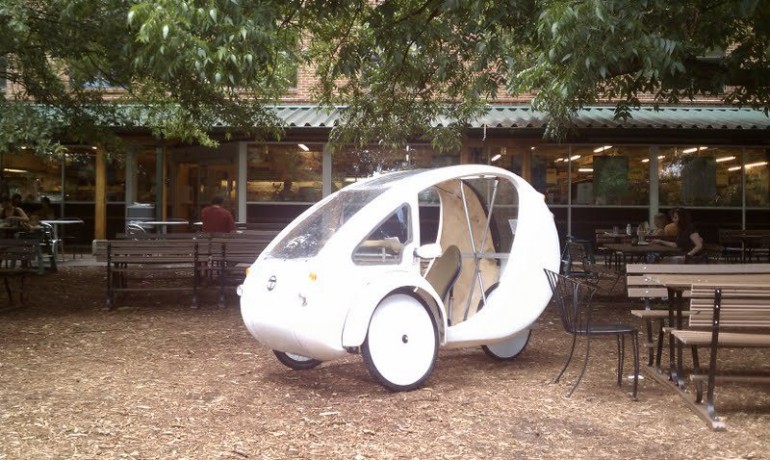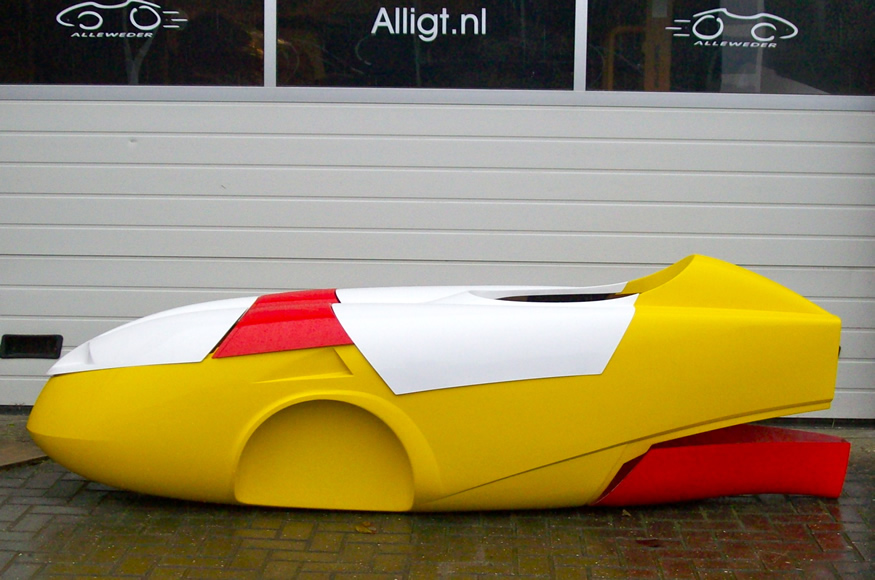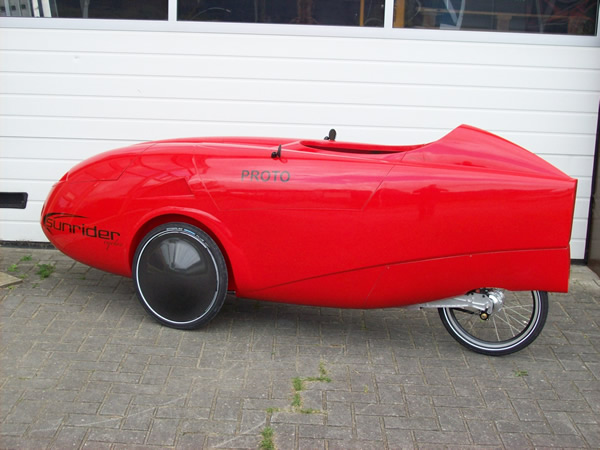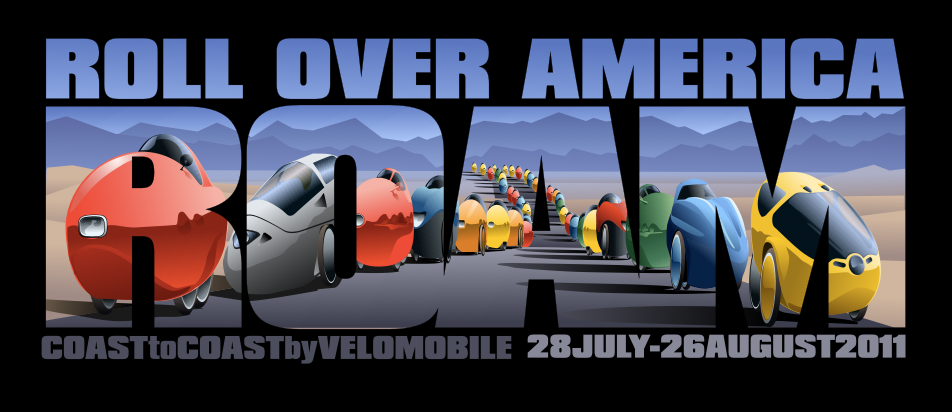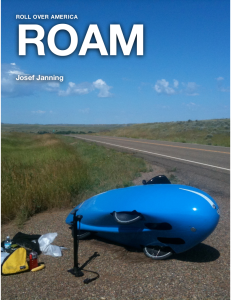After all the dire media hype about severe winter weather warnings here in the UK, we finally had a fall of wet slushy snow followed by a hard freeze. The white traces that are left are not much to look at, and the ice, while a hazard for some, is not much compared to what was threatened, but there is now a wintery brightness in the crisp air which sets the mind going. Now I know there are plenty of places further North or inland that have more snow than they could wish for, and where weather warnings really do warn about severe weather, but all the talk of snow and ice has set me wondering what options there are for winterised human powered transport.
The last video in the recent post about the Drymer trike and the video above, demonstrate that it is perfectly possible to take a human-powered, or even an eAssist trike out in the snow; and it is obvious that a velomobile body goes quite a way toward keeping the rider warm. But what about something beyond this? Going beyond the environmental rows over motorised snowmobile use in Yellowstone park, what about a human-powered snow-mobile?
Minds have already been exercised about this, and a mixture of concepts and products exist which tackle various aspects of the problem.
 This concept for a track driven pedal-powered vehicle in skis by Michelle Marin, an industrial designer from Venice, Italy, did the rounds of the design blogs a couple of years ago. As with most concepts there are technical niggles but the general idea is sound. A lower seating position would be good and perhaps larger skis to handle soft snow and a better steering mechanism, something more like Akerman than a home made box car racer.
This concept for a track driven pedal-powered vehicle in skis by Michelle Marin, an industrial designer from Venice, Italy, did the rounds of the design blogs a couple of years ago. As with most concepts there are technical niggles but the general idea is sound. A lower seating position would be good and perhaps larger skis to handle soft snow and a better steering mechanism, something more like Akerman than a home made box car racer.
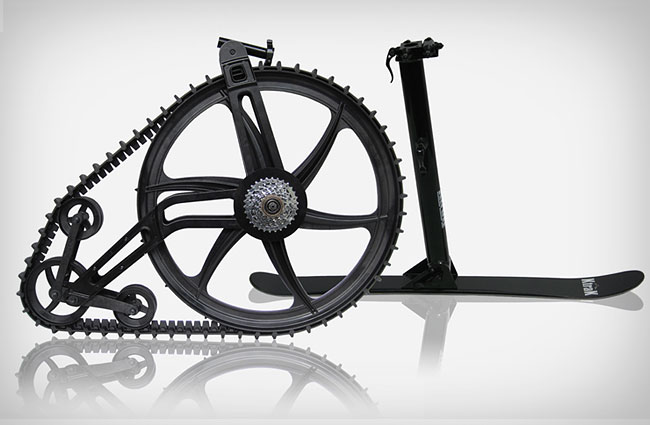 Following on from this concept, there already exists a commercial kit to convert a standard mountain bike to snowmobile mode. The K-trak is a Canadian developed system where you swap out the front and rear wheels for a ski and tracked wheel assembly which fit directly into the respective fork drop-outs. Thus allowing you to ride your bike through the snow much as you would in normal weather. Regrettably the manufacturers site and online shop has gone offline but the following US promotional video gives a good idea
Following on from this concept, there already exists a commercial kit to convert a standard mountain bike to snowmobile mode. The K-trak is a Canadian developed system where you swap out the front and rear wheels for a ski and tracked wheel assembly which fit directly into the respective fork drop-outs. Thus allowing you to ride your bike through the snow much as you would in normal weather. Regrettably the manufacturers site and online shop has gone offline but the following US promotional video gives a good idea
US adventurer Greg Kolodziejzyk has a review of the K-Track. While his first impressions were positive he is much more cool about the K-Trak’s performance overall. He sumarises the K-Trak system as being a very fun way to go down hill.
However Swis Catrike dealer Bike to the Future has fitted a Catrike with both skis and the K-Trak system and reports better success. The secret it seems is achieving floatation in the snow, something that the MTB mounted K-Trak can only do at speed, i.e. downhill.
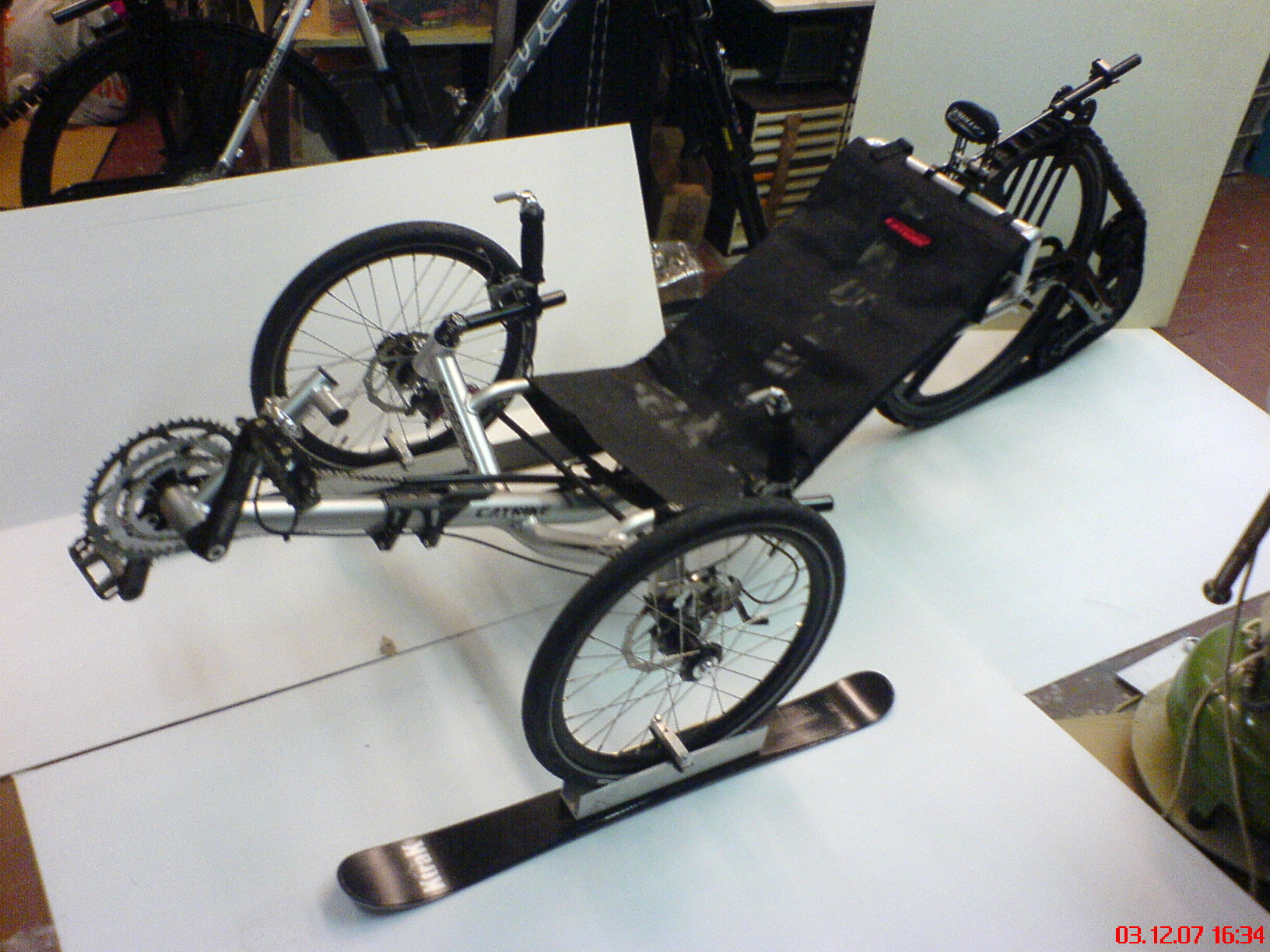 Greg’s original purpose for the K-Trak was to enable him to maintain an all-year cycle training program to support his other pedal powered projects, but perhaps another motivation was to test the design for suitability for his plan to pedal across the Greenland Icecap. As he notes on the initial concept page, there are no developed plans as yet, but one of the concepts is a track driven velomobile on skis.
Greg’s original purpose for the K-Trak was to enable him to maintain an all-year cycle training program to support his other pedal powered projects, but perhaps another motivation was to test the design for suitability for his plan to pedal across the Greenland Icecap. As he notes on the initial concept page, there are no developed plans as yet, but one of the concepts is a track driven velomobile on skis.

 Large skis and a larger track system should help with the floatation but one does wonder how the head-in configuration would perform when it comes to window fog. Unless a successful anti-fog coating or system be applied to the canopy, it is likely that a head-out configuration would be more successful.
Large skis and a larger track system should help with the floatation but one does wonder how the head-in configuration would perform when it comes to window fog. Unless a successful anti-fog coating or system be applied to the canopy, it is likely that a head-out configuration would be more successful.
While drag reduction due to vehicle speed would be a none issue; reduction of drag due to opposing wind, such as one would expect to meet with on the ice-cap, would still be a very good idea. Also a fairing or enclosure, covering the feet and legs at least, would also be very valuable; as David Gordon Wilson suggests in an editorial in Issue 28, and further hints regarding an observation by Philip Thiel in Issue 29 of Human Power; this would prevent heat loss due to pedalling motion.
Greenspeed, Australian recumbent trike builder, has experimented with the Snow-Trike concept and successfully built the following tracked trike using off-the-shelf components for a motorised vehicle. Please excuse the background noise music, not my choice.
Another home builder has fitted both skis track to his recumbent only in the opposite configuration with the track up-front.
A Finnish HPV enthusiast, inspired by an 1885 Ice-Velocipede, has been experimenting with a Cycle-Ski, but apart from a single page outlining the project and the following short video there is nothing more.
Searches for for more information turned up: a patent for a HP Snowmobile; a project to develop a human-pedal-powered caterpillar-drive; and some information about ski-bikes.
Ski-bikes are purely downhill machines, and currently exist to serve a niche sport. A history of Ski-Bikes is given on the following pages. and kits such as this one from Alpine Ski Bikes can be used to convert a typical MTB but there is absolutely no drive mechanism, just gravity.
I was unable to find much else. I would be interested to know what work, if any, has been done by others; and also to hear any further thoughts or comments. So please add your thoughts via the comment form below.



